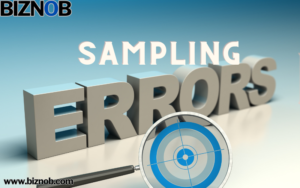What is Series 66?
Series 66 Exam: The NASAA Uniform Combined State Law Examination, or Series 66, is a test and license designed to certify people as securities agents or investment adviser representatives (IARs). Subjects related to advising customers on investments and completing securities transactions are covered under Series 66. After receiving a license, IARs may lawfully perform wealth management and financial advisory functions.
The North American Securities Administrators Association (NASAA) is the organization that created the Series 66 exam in addition to the Series 63 and Series 65 tests. The Financial Industry Regulatory Authority (FINRA) is in charge of overseeing it.
Understanding Series 66
The NASAA created the Series 66 certification in response to demands from the business community. The Financial Industry Regulatory Authority (FINRA), which also handles test result processing and distribution, administers the exam. A candidate can only seek to register in a state if they have passed both the Series 66 and the FINRA Series 7 test, a requirement for the Series 66.
To take the Series 66, one must successfully finish the Series 7. After passing the Series 7 test, candidates may take the Series 66 instead of the longer and more challenging Series 65 exam.
Exam and Structure for Series 66
There are ten unscored pretest questions and one hundred scored multiple-choice questions in the Series 66 exam. Candidates may complete the test in 150 minutes or two and a half hours.
A candidate has to correctly answer 73 out of 100 scored questions (73%) to get a passing score. The only calculators permitted in the test room are the electronic ones given to candidates by the exam administrator. There is a whiteboard and a dry-erase marker available. There are severe consequences for anyone found cheating or trying to cheat, and no study or reference materials of any type are allowed in the examination room.
By submitting a Form U4 or Form U10 and paying the $177 examination fee, candidates may register for the test through their employer. Further information is available on FINRA’s Series 66 informative webpage.
You must take the Series 66 in person at an approved testing site starting on October 21, 2022. Only applicants who can provide medical documentation proving they cannot take examinations in testing centers because of a handicap or other qualifying condition are eligible to take the Series 66 qualification exam online.
Anyone found to be cheating or trying to cheat on the Series 66 test faces severe consequences.
Content of Series 66 Exam
The NASAA regularly updates and posts information about the exam’s content online. The test questions are distributed as follows as of October 2022:
Economic Factors and Business Information (5%): There are five questions in this section about financial reporting, including financial ratios, annual reports, and filings with the U.S. Securities and Exchange Commission [SEC]. There are also five questions about quantitative methods, like net present value and internal rate of return, and questions about different types of risk, including market, interest rate, inflation, political, liquidity, and other risks.
Features of Investment Vehicles (20%): The 20 questions in this part cover a wide range of topics, such as alternative investments, insurance-based products, kinds and features of derivative instruments, and techniques for valuing fixed-income assets.
Client/Customer Investment Recommendations and Strategies (30%): This section comprises 30 questions ranging from capital market theory, portfolio management strategies, tax considerations, retirement planning, trading accounts, and performance measurement. Types of clients include individuals, businesses, trusts, and estates. Client profiling includes financial goals, current financial status, and risk tolerance.
Laws, rules, and guidelines, including prohibiting unethical business activities (45%),. There are 45 questions in this part on state and federal securities laws, rules and regulations about them, ethical behavior, and fiduciary responsibilities.
66 Series in contrast to 63 and 65 Series
Content from Series 63 and Series 65 is effectively combined in Series 66. Passing Optional 63 or Series 65 is unnecessary, although passing Series 7 is a prerequisite for Series 66.
Series 63 is the only document that grants state-level authorization to transact in securities on behalf of customers.
The Series 65 is the only document that grants state-level authority to manage client assets and provide financial advice.
What are the capabilities of the Series 66?
With state-level authorization, financial professionals who pass the Series 66 exam can operate as securities agents or investment advisor representatives (IARs). Financial professionals are authorized to operate as wealth/asset managers or investment advisers with a Series 66 license.
Which is more brutal, the Series 65 or the Series 66?
Another IAR license certificate that the North American Securities Administrators Association (NASAA) offers is the Series 65. The Series 66 test is a more recent addition. In response to demands from broker-dealers and other financial services companies, NASAA built it. It is a mix of Series 63 and Series 65. However, it needs the product, analysis, and strategy questions that make up a significant portion of the Series 65 test since passing the Series 7 exam is required.
Many believe the Series 66 test is more accessible than the Series 65 since it has 30 fewer questions and excludes subjects from the Series 7, even though the pass/fail percentages for these examinations have yet to be made public.
How challenging is the Series 66 test?
The extensive range of detailed information covered in Series 66 makes it challenging. Although the official success statistics for the Series 66 exam are unavailable, test preparation programs anticipate that between 65% and 70% of test takers will pass.
You have to wait for at least 30 days to retake the test if you don’t pass.
What is the price of the Series 66?
As of 2022, the cost of taking the Series 66 test is $177.
If a financial institution employs you, they could pay for the test on your behalf.
The Final Word
The FINRA Series 7 and NASAA Series 66 tests must be passed to become a certified financial adviser or money manager; however, the Series 63 and 65 may be taken in place of the 66 exam. The 100-question multiple-choice Series 66 test covers content from Series 63 and Series 65. The exam lasts 150 minutes, and passing requires a score of 73% or above. After passing, you can lawfully deal in securities and advise on stocks in any state.
Conclusion
- Investment adviser representatives must pass the Series 66 test to get a professional license (IAR).
- The Series 66 and Series 7 tests must be passed to become an IAR or securities agent.
- There are 100 multiple-choice questions on the Series 66 test, and a passing score of 73% is required.
- Economic variables, investment vehicles, client/customer investment suggestion tactics, and rules and regulations are just a few subjects covered in the test.
- Taking the Series 63 and Series 65 tests is the same as taking the Series 66 exam.

























































